Contents
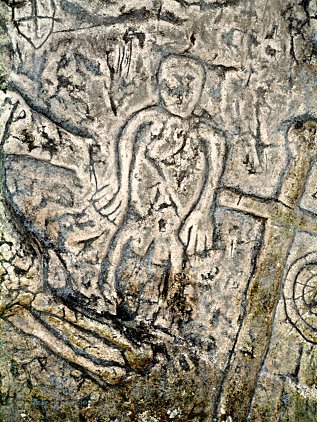
The Figure
Royston Cave is one of the more unusual places in Britain. Possibly the remnants of an Neolithic flint mine, the cave was used for religious purposes in medieval times and is covered in carvings of religious and secular subjects. Local historians insist that there is a Templar connection and that it was used for initiation purposes into that order. The imagery in the cave tends to support this theory with some of the carvings being interpreted as events in Templar history. A number of saints are depcited including St Catherine, St Lawrence and St Christopher. The cave originally had a platform built into it which made the old floor much higher than the modern one.
This sheela figure is situated between a horse and a sword as can be seen in the above picture (Fig 1). It’s open to debate whether the figure should be taken in context with these carvings as Joseph Beldam did in his book The Origins and Use of the Royston Cave 1884 (see below). My initial reaction is to take it as a stand alone figure there does not seem to be a discernable pattern in how they should be read. The figure has the Herculean shoulders and the exaggerated hanging pudenda which marks it as sheela but, as Anderson points out, the figure does not gesture to the genitals the hands hanging loosely at its sides. The carving of the sheela is fairly crude especially when compared to some of the care taken on the other figures. There are a number of holes drilled into the walls of the cave which are thought to have held supports for the candles that lit it. Interestingly one of these holes is directly between the legs of the sheela (Fig 2) this would have meant that the figure and more to the point the vaginal area would have been directly lit further emphasizing the shock that the figure would have been likely to induce.
Whereas it is hard to date the carvings the style of some of the imagery seems to indicate 13th – 14th Century origin. This would make this a later example of sheela if this date is correct.
Royston lies on the intersection of the ancient thoroughfares of the Icknield Way and Ermine St. Interestingly another Sheela can also be found near the Icknield way further south at Buckland
More information on Royston Cave can be found at www.roystoncave.com and on Wikipedia which replicates a number of plates from Beldam’s book.
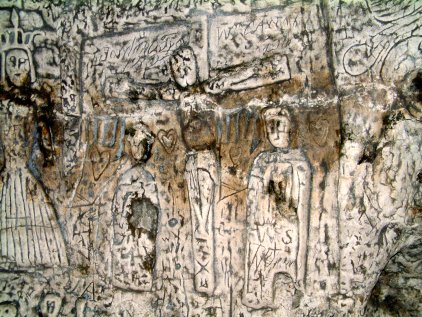
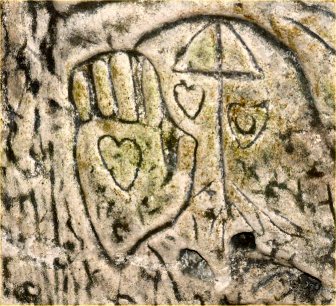
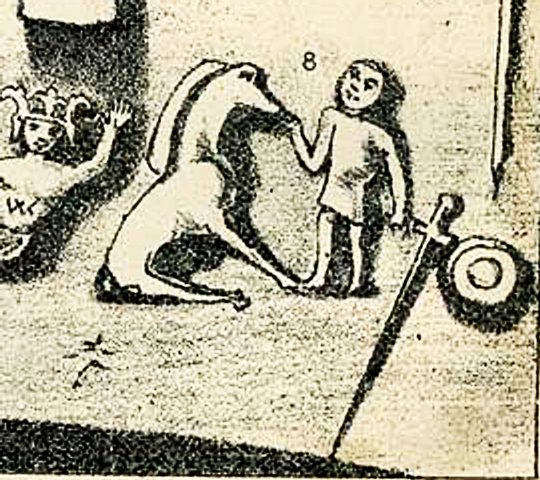
Joseph Beldam and the Cave
In 1884 Joseph Beldam published a book called “The Origins and Use of the Royston Cave”. In the book the Sheela na gig changes sex and is associated with the horse and sword next to it. This scene is then, somewhat bizzarely, described as the conversion of St Paul. As can be seen in the illustration from the book on the left the Sheela has been bowdlerised into a clothed figure petting the horse next to it. This is one more example of Victorian self-censorship in the describing of exhibitionist figures which can also be seen in tracts on the Llanhamlach figure and the typanum at Stoke Sub Hamdon.
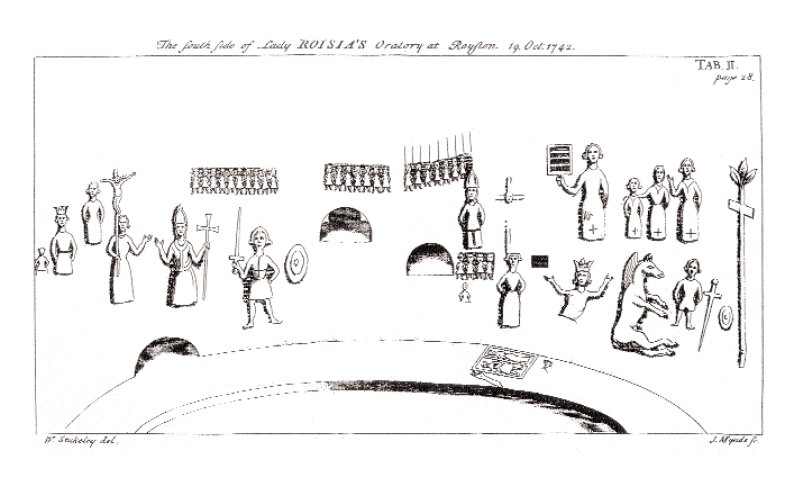
William Stukeley and Royston Cave
Antiquarian William Stukeley made an earlier drawing of the figure which has also been bowdlerised. In this drawing the arms are correctly positioned but the figure has acquired a head of hair similar to other figures in the cave and the carved vulva now becomes part of a skirt or shift. As you can see from the above photograph the legs are indicated either side of the vulva making it distinctly un-skirt like. Stukeley attributed a Norman origin to the cave writing shortly after it’s discovery
pure chalk. ’Tis of an elegant bell like form … all
around the sides, it is adorned with imagery in
basso relieve of crucifixes, saints, martyrs and
historical pieces … suitable to a time that was
soon after the conquest.”